-
收藏模板
- 模板信息
- 更新时间:2023-09-07
- 字数:约9122字
- 页数:约7页
- 格式:.doc
- 推荐版本:Office2016及以上版本
- 售价:5 金币
您可能喜欢的文档
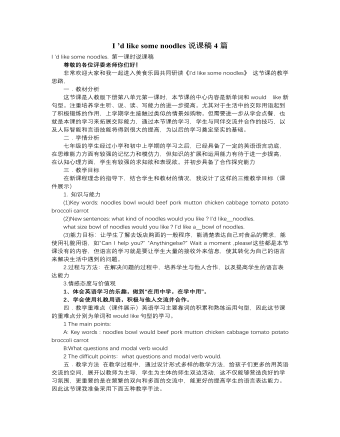
人教版新目标初中英语七年级下册I ’d like some noodles说课稿4篇
《I'd like some noodles》是人教板新目标七年级下册第八单元内容。本节课的中心内容是新单词和would like 句型表达法。注重培养学生听、说、读、写能力的进一步提高,尤其对于生活中的交际用语起到了积极的作用。通过本课的学习,学生可以拓展交际能力,提高与同伴交流并合作的技巧,以及言语技能,为以后的学习奠定坚实的基础。 (2)教学目标 七年级的学生经过小学和初中上学期的学习后,已经具备了一定的英语语言功底,在思维能力方面有较强的记忆力和模仿力,但知识的扩展和运用能力有待于进一步提高,加之在《课程目标》指导下,结合学生和教材的情况,我设计了这样的三维教学目标(课件展示) a 知识目标 重点词汇:noodles, beef ,mutton, chicken, cabbage, tomatoes, potatoes. 重点句型:What kind of noodles would you like? I'd like beef and tomato noodles. What size of noodles would you like? I'd like a large\medium\small bowl of noodles. b 能力目标:培养运用英语交际的能力,让学生把所学到的语言知识和生活实际联系起来,使学习过程生活化。培养学生探究、合作的参与意识。
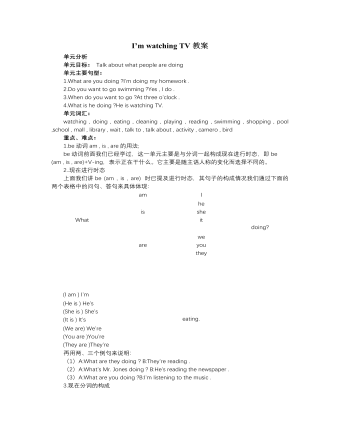
人教版新目标初中英语七年级下册I’m watching TV教案
单元分析单元目标: Talk about what people are doing 单元主要句型:1.What are you doing ?I’m doing my homework .2.Do you want to go swimming ?Yes , I do .3.When do you want to go ?At three o’clock .4.What is he doing ?He is watching TV. 单元词汇:watching , doing , eating , cleaning , playing , reading , swimming , shopping , pool ,school , mall , library , wait , talk to , talk about , activity , camero , bird 重点、难点:1.be动词am , is , are的用法;be动词前面我们已经学过,这一单元主要是与分词一起构成现在进行时态,即be (am , is , are)+V-ing,表示正在干什么。它主要是随主语人称的变化而选择不同的。2..现在进行时态上面我们讲be (am , is , are) 时已提及进行时态,其句子的构成情况我们通过下面的两个表格中的问句、答句来具体体现:3.现在分词的构成现在进行时态中be + V - ing 的构成中V-ing被称为现在分词,它的基本构成是动词原形+ing,但也有些特殊情况,下面分几类说明:(1)一般情况+ing如:read→reading,go→going,do→doing,look→looking,listen→listening,watch→watching.(2)以不发音的e结尾的词,去掉e,再加ing.如:write→writing,skate→skating,type→typing,wake→waking,make→making
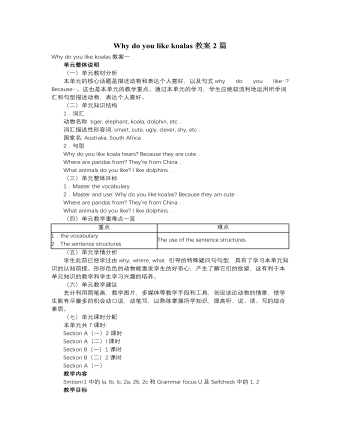
人教版新目标初中英语七年级下册Why do you like koalas教案2篇
单元整体说明(一)单元教材分析本单元的核心话题是描述动物和表达个人喜好,以及句式why do you like…? Because…。这也是本单元的教学重点。通过本单元的学习,学生应能较流利地运用所学词汇和句型描述动物,表达个人喜好。(二)单元知识结构1.词汇动物名称 tiger, elephant, koala, dolphin, etc.词汇描述性形容词: smart, cute, ugly, clever, shy, etc.国家名: Australia, South Africa2.句型Why do you like koala hears? Because they are cute.Where are pandas from? They're from China.What animals do you like? I like dolphins.(三)单元整体目标1.Master the vocabulary2.Master and use: Why do you like koalas? Because they am cute.Where are pandas from? They're from China.What animals do you like? I like dolphins.(四)单元教学重难点一览(五)单元学情分析学生此前已经学过由why, where, what 引导的特殊疑问句句型,具有了学习本单元知识的认知前提。形形色色的动物能激发学生的好奇心,产生了解它们的欲望,这有利于本单元知识的教学和学生学习兴趣的培养。
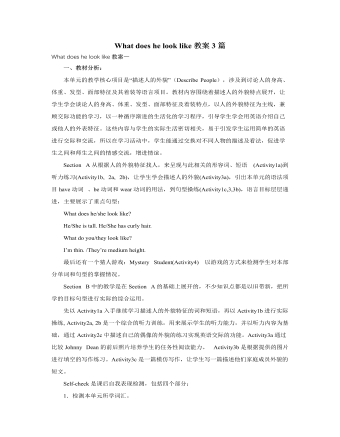
人教版新目标初中英语七年级下册What does he look like教案3篇
所需要用到的句子:Who is that?That is Jack. I like him.Why do you like him?I like him because he is interesting.Task 4: 设计理想中的人类Step one: 设计理想中的人类的外貌。把全班同学分成若干小组,学生可以边说边在纸上画出他们的模样。Step two: 设计理想中人类的性格。学生们可以把那些能描述性格的单词写在图画的旁边。Step three: 每组选出一名同学,其他同组同学提问,他作简单回答,并说明原因。所需用到的句子:What does he or she look like?He or she ...What is he or she like?He or she is ...Why?Because ...Task 5: 挑战性活动调查性格是天生的还是后天形成的,让每个同学回家去调查一下自己成长过程中性格是否有变化,具体是怎样的,为什么会这样? Teaching Aims:1. Enable students to have a general understanding of how to talk about people's physical appearance.2. Enable students to tackle some essential vocabularies and patterns about describing people. Provide them with necessary skills and methods.3. Create various chances for students to describe the persons they're familiar with, such as classmates, family members, teachers, idols, etc.
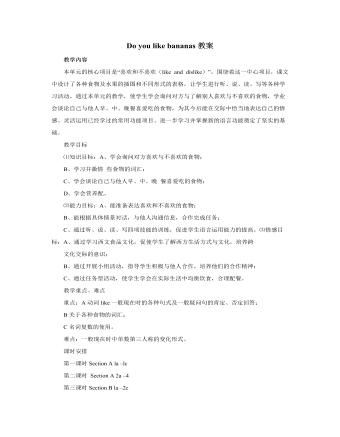
人教版新目标初中英语七年级上册Do you like bananas教案
教学目标 ⑴知识目标:A、学会询问对方喜欢与不喜欢的食物; B、学习并激情 些食物的词汇; C、学会谈论自己与他人早、中、晚 餐喜爱吃的食物; D、学会营养配。 ⑵能力目标:A、能准备表达喜欢和不喜欢的食物; B、能根据具体情景对话,与他人沟通信息,合作完成任务; C、通过听、说、读、写四项技能的训练,促进学生语言运用能力的提高。⑶情感目标:A、通过学习西文食品文化,促使学生了解西方生活方式与文化,培养跨 文化交际的意识; B、通过开展小组活动,指导学生积极与他人合作,培养他们的合作精神; C、通过任务型活动,使学生学会在实际生活中均衡饮食,合理配餐。 教学重点、难点 重点:A动词like一般现在时的各种句式及一般疑问句的肯定、否定回答; B关于各种食物的词汇; C名词复数的使用。 难点:一般现在时中单数第三人称的变化形式。
- 查看更多相关Word文档
I ’d like some noodles教案

课 题 | I’d like some noodles. | 课型 | 新 授 | ||
教 学 目 标 | 知识能力 | Words:l noodle, beef, green tea, cabbage, onions, juice, potato, special, size, dumpling, porridge, rice, Drills: -- What kind of noodles would you like? --I’d like beef noodles, please. Subject:学生学会订购食物。 | |||
思想教育 | 关爱父母和他人,帮助他们做一些力所能及的家务事。 | ||||
教学重点 | What kind of noodles would you like? I’d like beef noodles, please. What kind of noodles would you like? I’d like mutton and potato noodles, please. | ||||
教学难点 | What kind of noodles would you like? I’d like mutton and potato noodles, please. | ||||
教学方法 | 1. Thinking of examples from the students’ real lives. 2. Making sentences by looking at the pictures. | ||||
教学时数 | 1课时 | ||||
教具 | a tape recorder, a computer, some objects | ||||
教学过程 Step1.Greeting and revision 1. Greet students and have a chant together. 2. Have a revision about animal names. Step2.Presentation 1. Show them some pictures of food. Teach some new words, hamburgers, noodles, rice. And ask them, what kind of food would you like? Help them to answer I would like…. Then give them 2 minutes to practice with their partners. 2. Show students some pictures of vegetables. And teach them these new words, potatoes, tomatoes, cabbage, Carrots. Ask them what kind of vegetables would you like? Help them to answer I would like….. Then give them 2 minutes to practice with their partners. 3. Give students some pictures of meat. Teach them new words beef, mutton, chicken, fish. And ask them what kind of meat would you like? Help them answer I would like….And give them 2minutes to practice the dialogue with their partners. Step 3 Practice Look at the pictures and learn words .say each words and ask students to repeat. Then ask students to match each word with one of the ingredients in noodles. Step 4 Listening 1.Look at the three bowls of noodles. Ask: What ingredients are in these noodles? 2.Play the recording the first time .Students only listen. 3.Play the recording a second time. 4.Correct the answers. Step5 Practice 1.Read the conversation in the picture in 1a. 2.Ask students to work in pairs. One person is the waiter, the other one is the customer. 3.Perform the conversation in front of the classroom. Step 6: Practice 1 Look at the picture .What is they doing in 3a? 2 Read all the questions yourselves. 3 Read all the answers yourselves. 4 Now please match each question with an answer. The first one is done as a sample. 5 Check the answers. 6 Read the conversation again in 3a. 7 Now make your own conversation. Student A asks the questions from activity 3a. Student B gives true answers. 8 Perform their dialogue for the class. Homework: 熟记本课的单词和重点句型。 | |||||
板 书 设 计 | I’d like some noodles. Section A The First Period What kind of noodles would you like? I’d like beef noodles, please. What kind of noodles would you like? I’d like mutton and potato noodles, please. | ||||
课 后 反 思 |
| ||||
作 业 反 馈 |
| ||||
课题 | I’d like some noodles. | 课型 | 新 授 | ||
教 学 目 标 | 知识 能力 | Words:large, medium, noodle, beef, green tea, cabbage, onions, juice, potato, special, size, dumpling, porridge, rice, soup, fish, Drills: -- What kind of noodles would you like? --I’d like beef noodles, please. Subject:学生学会订购食物。 | |||
思 想 教 育 |
关爱父母和他人,帮助他们做一些力所能及的家务事。 | ||||
教学重点 | What kind of noodles would you like? I’d like beef noodles, please. What size bowl of noodles would you like? I’d like a large / medium / small bowl of noodles. | ||||
教学难点 | What size bowl of noodles would you like? I’d like a large / medium / small bowl of noodles. | ||||
教学方法 | 1. Thinking of examples from the students’ real lives. 2. Making sentences by looking at the pictures. | ||||
教学时数 | 1课时 | ||||
教具 | a tape recorder, a computer, some objects | ||||
教学过程 Step One: Revision 1 Revise the food words. 2 Revise: What kind of noodles would you like? I’d like … What size bowl of noodles would you like? I’d like… Step2 Listening 1. Look at the food in the picture in 2a and name each one. 2. Read the numbered list of words. 3. Say, you will hear a conversation. The people will talk about some of the foods, but they will not talk about others. Please check the names of the food you hear below. 4. Play the recording a second time. 5. Correct the answers. Step3 Listening 1. Read the conversation in 2b. Point to the blank lines .Say, listen again and fill in the blanks now. 2. Check the answers. Step4 Practice 1. Read the conversation in 2c yourselves. 2. Work in pairs. Each student can be both the waiter and the customer. Say what you really like with your noodles. Step5.Game. Describe noodles (kind, size). I have four sentences about noodles. I need four students to stand in front of the classroom one by one, and let him or her to guess what kind of noodles and size bowl of noodles it is. Continue our competition. Step6.Role play Student A works in a noodle house. Take an order for noodles. Student B is the customer. Decide the size of bowl and the ingredients for the noodles. | |||||
板 书 设 计 | I’d like some noodles. Section B The Third Period What kind of noodles would you like? I’d like beef noodles, please. What size bowl of noodles would you like? I’d like a large / medium / small bowl of noodles. | ||||
课 后 反 思 |
| ||||
作 业 反 馈 |
| ||||
课题 | I’d like some noodles. | 课型 | 新 授 | |||
教 学 目 标 | 知识 能力 | Words: juice, potato, special, size, dumpling, porridge, rice, soup, fish, Drills: -- What kind of noodles would you like? --I’d like beef noodles, please. Subject:学生学会订购食物。 | ||||
思 想 教 育 | 关爱父母和他人,帮助他们做一些力所能及的家务事。 | |||||
教 学 重 点 | What kind of noodles would you like? I’d like beef noodles, please. What size bowl of noodles would you like? I’d like a large / medium / small bowl of noodles. | |||||
教 学 难 点 | What size bowl of noodles would you like? I’d like a large / medium / small bowl of noodles. | |||||
教 学 方 法 | 1. Thinking of examples from the students’ real lives. 2. Making sentences by looking at the pictures. | |||||
教 学 时 数 | 1课时 | |||||
教具 | a tape recorder, a computer, some objects
| |||||
教学过程 Step One: Revision 1 Revise the food words. 2 Revise: What kind of noodles would you like? I’d like … What size bowl of noodles would you like? I’d like… Step 2: Presentation Show them some pictures of food. Ask them to say the new words then repeat .After that ask students to look at 1a and match the words with the pictures. Step 3: Practice Students do 1b .teacher says : Please circle the things you like and put an x in front of the things you don’t like .When students finished this part , ask students to practice the dialogue in pairs . Step4 Listening 1. Point to 2a, say, for this activity, mark your answers in activity 1a .You will hear a conversation. Play the recording for the first time. Students only listen. Then play the scone time, ask students to circle each of the foods in activity 1a that is mentioned in the dialogue on the tape. Then check the answers. 2. Listen again; fill in the order form on page 81. Step 5 Role play Student A works at a dumping house. Look at page 82. Ask questions and fill in the order form. Student B orders food form from Student A. Order dumplings and drinks from activity 1a ask some pairs of students to present their conversations to the class. Step 6 Homework | ||||||
板 书 设 计 | I’d like some noodles. Section B The Third Period What kind of noodles would you like? I’d like beef noodles, please. What size bowl of noodles would you like? I’d like a large / medium / small bowl of noodles. |
| ||||
课 后 反 思 |
|
| ||||
作 业 反 馈 |
|
| ||||
课题 | I’d like some noodles. | 课型 | 新 授 | |
教 学 目 标 |
知识 能力 | Words: juice, potato, special, size, dumpling, porridge, rice, soup,Drills: -- What kind of noodles would you like? --I’d like beef noodles, please. Subject:学生学会订购食物。 | ||
思 想 教 育 |
关爱父母和他人,帮助他们做一些力所能及的家务事。 | |||
教 学 重 点 | What kind of noodles would you like? I’d like beef noodles, please. What size bowl of noodles would you like? I’d like a large / medium / small bowl of noodles. | |||
教 学 难 点 | What size bowl of noodles would you like? I’d like a large / medium / small bowl of noodles. | |||
转载请注明出处!本文地址:
https://www.lfppt.com/worddetails_61866729.html最新课件教案文档
-

精选高中生期末评语
1、该生学习态度端正 ,能够积极配合老师 ,善于调动课堂气氛。 能够积极完成老师布置的任务。学习劲头足,听课又专注 ,做事更认 真 ,你是同学们学习的榜样。但是,成绩只代表昨天,并不能说明你 明天就一定也很优秀。所以,每个人都应该把成绩当作自己腾飞的起 点。2、 你不爱说话 ,但勤奋好学,诚实可爱;你做事踏实、认真、为 人忠厚 ,是一个品行端正、有上进心、有良好的道德修养的好学生。在学习上,积极、主动,能按时完成老师布置的作业,经过努力 ,各 科成绩都有明显进步,你有较强的思维能力和学习领悟力,学习也有 计划性,但在老师看来,你的潜力还没有完全发挥出来,学习上还要有持久的恒心和顽强的毅力。

公司2024第一季度意识形态工作联席会议总结
一是要把好正确导向。严格落实主体责任,逐条逐项细化任务,层层传导压力。要抓实思想引领,把理论学习贯穿始终,全身心投入主题教育当中;把理论学习、调查研究、推动发展、检视整改等有机融合、一体推进;坚持学思用贯通、知信行统一,努力在以学铸魂、以学增智、以学正风、以学促干方面取得实实在在的成效。更加深刻领会到******主义思想的科学体系、核心要义、实践要求,进一步坚定了理想信念,锤炼了政治品格,增强了工作本领,要自觉运用的创新理论研究新情况、解决新问题,为西北矿业高质量发展作出贡献。二是要加强应急处事能力。认真组织开展好各类理论宣讲和文化活动,发挥好基层ys*t阵地作用,加强分析预警和应对处置能力,提高发现力、研判力、处置力,起到稳定和引导作用。要坚决唱响主旋律,为“打造陕甘片区高质量发展标杆矿井”、建设“七个一流”能源集团和“精优智特”新淄矿营造良好的舆论氛围。三是加强舆情的搜集及应对。加强职工群众热点问题的舆论引导,做好舆情的收集、分析和研判,把握时、度、效,重视网上和网下舆情应对。
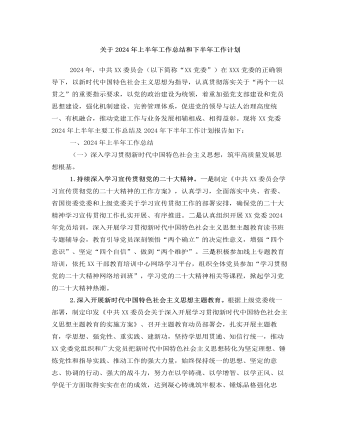
关于2024年上半年工作总结和下半年工作计划
二是深耕意识形态。加强意识形态、网络舆论阵地建设和管理,把握重大时间节点,科学分析研判意识形态领域情况,旗帜鲜明反对和抵制各种错误观点,有效防范处置风险隐患。积极响应和高效落实上级党委的决策部署,确保执行不偏向、不变通、不走样。(二)全面深化党的组织建设,锻造坚强有力的基层党组织。一是提高基层党组织建设力量。压实党建责任,从政治高度检视分析党建工作短板弱项,有针对性提出改进工作的思路和办法。持续优化党建考核评价体系。二是纵深推进基层党建,打造坚强战斗堡垒。创新实施党建工作模式,继续打造党建品牌,抓实“五强五化”党组织创建,广泛开展党员教育学习活动,以实际行动推动党建工作和经营发展目标同向、部署同步、工作同力。三是加强高素质专业化党员队伍管理。配齐配强支部党务工作者,把党务工作岗位作为培养锻炼干部的重要平台。
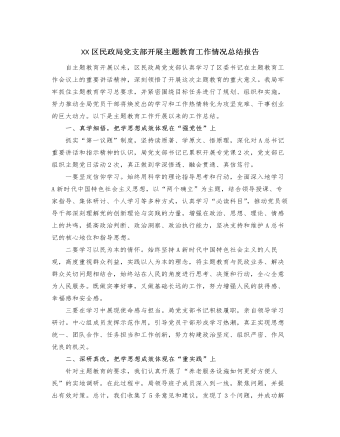
XX区民政局党支部开展主题教育工作情况总结报告
二要专注于解决问题。根据市委促进经济转型的总要求,聚焦“四个经济”和“双中心”的建设,深入了解基层科技工作、学术交流、组织建设等方面的实际情况,全面了解群众的真实需求,解决相关问题,并针对科技工作中存在的问题,采取实际措施,推动问题的实际解决。三要专注于急难愁盼问题。优化“民声热线”,推动解决一系列基层民生问题,努力将“民声热线”打造成主题教育的关键工具和展示平台。目前,“民声热线”已回应了群众的8个政策问题,并成功解决其中7个问题,真正使人民群众感受到了实质性的变化和效果。接下来,我局将继续深入学习主题教育的精神,借鉴其他单位的优秀经验和方法,以更高的要求、更严格的纪律、更实际的措施和更好的成果,不断深化主题教育的实施,展现新的风貌和活力。
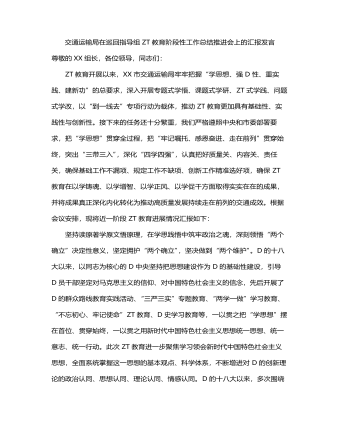
交通运输局在巡回指导组主题教育阶段性工作总结推进会上的汇报发言
今年3月,市政府出台《关于加快打造更具特色的“水运XX”的意见》,提出到2025年,“苏南运河全线达到准二级,实现2000吨级舶全天候畅行”。作为“水运XX”建设首战,谏壁闸一线闸扩容工程开工在即,但项目开工前还有许多实际问题亟需解决。结合“到一线去”专项行动,我们深入到谏壁闸一线,详细了解工程前期进展,实地察看谏壁闸周边环境和舶通航情况,不断完善施工设计方案。牢牢把握高质量发展这个首要任务,在学思践悟中开创建功之业,坚定扛起“走在前、挑大梁、多做贡献”的交通责任,奋力推动交通运输高质量发展持续走在前列。以学促干建新功,关键在推动高质量发展持续走在前列。新时代中国特色社会主义思想着重强调立足新发展阶段、贯彻新发展理念、构建新发展格局,推动高质量发展,提出了新发展阶段我国经济高质量发展要坚持的主线、重大战略目标、工作总基调和方法论等,深刻体现了这一思想的重要实践价值。

XX区文旅体局2023年工作总结 及2024年工作安排
三、2024年工作计划一是完善基层公共文化服务管理标准化模式,持续在公共文化服务精准化上探索创新,围绕群众需求,不断调整公共文化服务内容和形式,提升群众满意度。推进乡镇(街道)“114861”工程和农村文化“121616”工程,加大已开展活动的上传力度,确保年度目标任务按时保质保量完成。服务“双减”政策,持续做好校外培训机构审批工作,结合我区工作实际和文旅资源优势,进一步丰富我市义务教育阶段学生“双减”后的课外文化生活,推动“双减”政策走深走实。二是结合文旅产业融合发展示范区,全力推进全域旅游示范区创建,严格按照《国家全域旅游示范区验收标准》要求,极推动旅游产品全域布局、旅游要素全域配置、旅游设施全域优化、旅游产业全域覆盖。
今日更新Word
-

精选高中生期末评语
1、该生学习态度端正 ,能够积极配合老师 ,善于调动课堂气氛。 能够积极完成老师布置的任务。学习劲头足,听课又专注 ,做事更认 真 ,你是同学们学习的榜样。但是,成绩只代表昨天,并不能说明你 明天就一定也很优秀。所以,每个人都应该把成绩当作自己腾飞的起 点。2、 你不爱说话 ,但勤奋好学,诚实可爱;你做事踏实、认真、为 人忠厚 ,是一个品行端正、有上进心、有良好的道德修养的好学生。在学习上,积极、主动,能按时完成老师布置的作业,经过努力 ,各 科成绩都有明显进步,你有较强的思维能力和学习领悟力,学习也有 计划性,但在老师看来,你的潜力还没有完全发挥出来,学习上还要有持久的恒心和顽强的毅力。
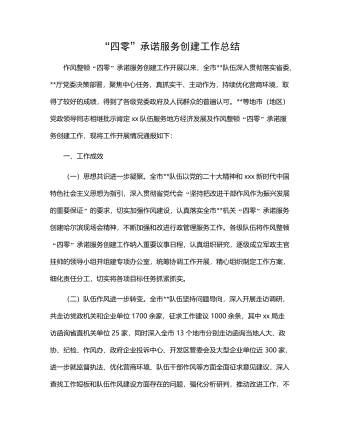
“四零”承诺服务创建工作总结
(二)坚持问题导向,持续改进工作。要继续在提高工作效率和服务质量上下功夫,积极学习借鉴其他部门及xx关于“四零”承诺服务创建工作的先进经验,同时主动查找并着力解决困扰企业和群众办事创业的难点问题。要进一步探索创新,继续优化工作流程,精简审批程序,缩短办事路径,压缩办理时限,深化政务公开,努力为企业当好“保姆”,为群众提供便利,不断适应新时代人民群众对政务服务的新需求。(三)深化内外宣传,树立良好形象。要深入挖掘并及时总结作风整顿“四零”承诺服务创建工作中形成的典型经验做法,进一步强化内部宣传与工作交流,推动全市创建工作质效整体提升。要面向社会和公众庄严承诺并积极践诺,主动接受监督,同时要依托电台、电视台、报纸及微信、微博等各类媒体大力宣传xx队伍作风整顿“四零”承诺服务创建工作成果,不断扩大社会知情面和群众知晓率。

2024年度工作计划汇编(18篇)
1.市政基础设施项目5项,总建设里程2.13km,投资概算2.28亿元。其中,烔炀大道(涉铁)工程施工单位已进场,项目部基本建成,正在办理临时用地、用电及用水等相关工作;中铁佰和佰乐(巢湖)二期10KV外线工程已签订施工合同;黄麓镇健康路、纬四路新建工程均已完成清单初稿编制,亟需黄麓镇完成图审工作和健康路新建工程的前期证件办理;公安学院配套道路项目在黄麓镇完成围墙建设后即可进场施工。2.公益性建设项目6项,总建筑面积15.62万㎡,投资概算10.41亿元。其中,居巢区职业教育中心新建工程、巢湖市世纪新都小学扩建工程已完成施工、监理招标挂网,2月上旬完成全部招标工作;合肥职业技术学院大维修三期已完成招标工作,近期签订施工合同后组织进场施工;半汤疗养院净化和医用气体工程已完成招标工作;半汤疗养院智能化工程因投诉暂时中止;巢湖市中医院(中西医结合医院)新建工程正在按照既定计划推进,预计4月中下旬挂网招标。

驻村工作队2024年第一季度工作总结汇编(4篇)
三是做大做强海产品自主品牌。工作队于xx年指导成立的冬松村海产品合作社,通过与消费帮扶平台合作,在工作队各派出单位、社会团体、个人支持下,已获得逾xx万元销售额。2022年底工作队推动合作社海产品加工点扩建的工作方案已获批,待资金下拨后将正式启动扩建工作。四是积极助企纾困,带动群众增收致富。工作队利用去年建立的xx镇产业发展工作群,收集本地企业在产品销售、技术、人力、资金、运营、用地等方面的需求,并加大xx支持乡村振兴力度,xx助理赴各村委开展多场xx政策支持乡村振兴宣讲活动,本季度有x万元助农贷款获批,xx万贷款正在审批中。在壮大既有产业的同时,完善联农带农机制,一方面鼓励企业雇用本地农户就业,另一方面计划与本地农户签订长期收购合同,让农民种得放心、种得安心,带动当地群众共同致富。

主题教育总结常用提纲大全
第一,主题教育是一次思想作风的深刻洗礼,初心传统进一步得到回归。第二,主题教育是一次沉疴积弊的集中清扫,突出问题进一步得到整治。第三,主题教育是一次强化为民服务的生动实践,赤子之情进一步得到提振。第四,主题教育是一次激发创业担当的有利契机,发展层次进一步得到提升。2.第一,必须提领思想、武装思想。第二,必须聚焦问题、由表及里。第三,必须领导带头、以上率下。第四,必须务实求实、认真较真。3.一是抬高政治站位,坚持大事大抓。二是坚持思想领先,狠抓学习教育。三是突出问题导向,深入整改纠治。四是坚持领导带头,发挥表率作用。4.一是立足“早”字抓筹划。二是着眼“活”字抓学习。三是围绕“统”字抓协调。5.一是形势所需。二是任务所系。三是职责所在。四是制度所定。6.一要提升认识。二要积极作为。三要密切协作。

主题教育专题读书班结班总结讲话
第二,要把调查研究贯穿始终,实干担当促进发展。开展好“察实情、出实招”“破难题、促发展”“办实事、解民忧”专项行动,以强化理论学习指导发展实践,以深化调查研究推动解决发展难题。领导班子成员要每人牵头XX个课题开展调查研究,XX月底前召开调研成果交流会,集思广益研究对策措施。各部门、各单位要制定调研计划,通过座谈访谈、问卷调查、统计分析等方式开展调查研究,解决工作实际问题,帮助基层单位和客户解决实际困难。第三,要把检视问题贯穿始终,廉洁奉公树立新风。认真落实公司主题教育整改整治工作方案要求,坚持边学习、边对照、边检视、边整改,对标对表xxx新时代中国特色社会主义思想,深入查摆不足,系统梳理调查研究发现的问题、推动发展遇到的问题、群众反映强烈的问题,结合巡视巡察、审计和内外部监督检查发现的问题,形成问题清单。

















